Go on a Wildlife Safari
During my PhD on Gamma-Ray Bursts at the University of Leicester (2015-2018), I was given the opportunity to travel to Namibia. Not only was this my first trip to continental Africa, but also my first trip outside Europe, and my first solo trip! Safe to say, watching The Lion King was an essential pre-trip activity!
I was asked to travel to Namibia to spend some time operating the H.E.S.S. atmospheric Cherenkov telescopes. In a similar way that the aurora appear when high energy particles from the Sun interact with our atmosphere and cause lights in the sky, high energy particles from other sources - such as Gamma-Ray Bursts or the black hole at the centre of the Milky Way - can also reach our atmosphere and produce light. But where the Sun streams out literal tonnes of particles, from a distant object like our galactic centre we may only get a handful of particles. Therefore, there is no hope of seeing these lights with the naked eye, and instead we require the optical power of H.E.S.S.
H.E.S.S. has a total of 5 telescopes: four 12m mirrors arranged in a square of side-length 120m, and another 28m mirror in the centre. This array formation allows the telescopes to operate as if they were a single instrument with a dish diameter of 120m! Because we were expecting so few particles and such tiny flashes of light, the cameras mounted to these telescopes are incredibly sensitive. So sensitive in fact, that even expose to the light reflected from the Moon could burn out the receivers! Therefore, observing shifts at H.E.S.S. ran for four weeks. You would arrive at a full moon, and your first shift would be ~45mins long between sunset and moonrise. You’d observe for 2 weeks until you reached a new moon and your were working all night. And then the nights started getting shorter, but from the wrong end! Eventually, your last ~45min shift is at something like 5am between moonset and sunrise. Despite being on the same lines of longitude as the UK (and hence minimal time difference), it was probably the worst experience of jet lag I ever had!
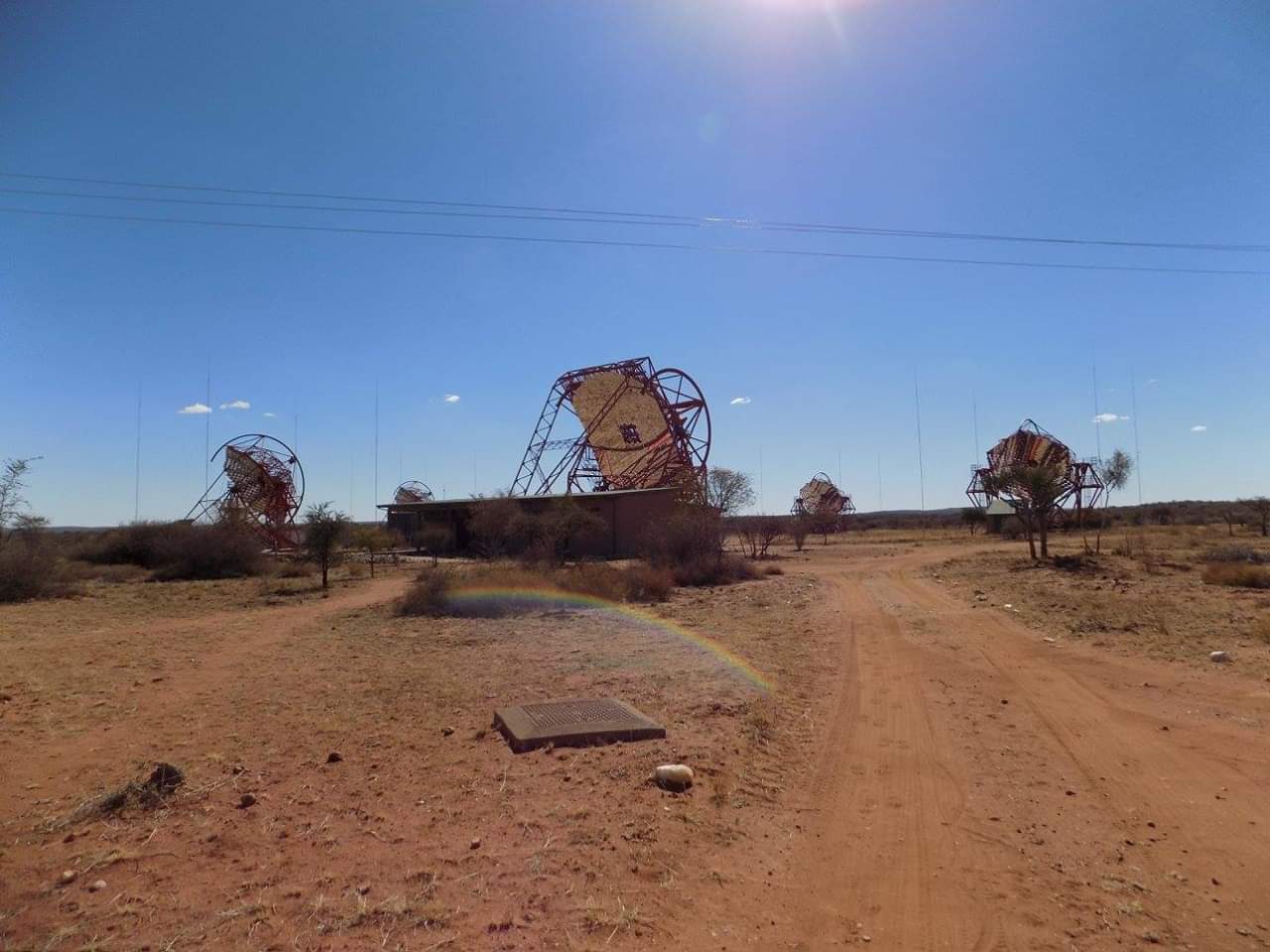
The H.E.S.S. site. The building in front is the control room.
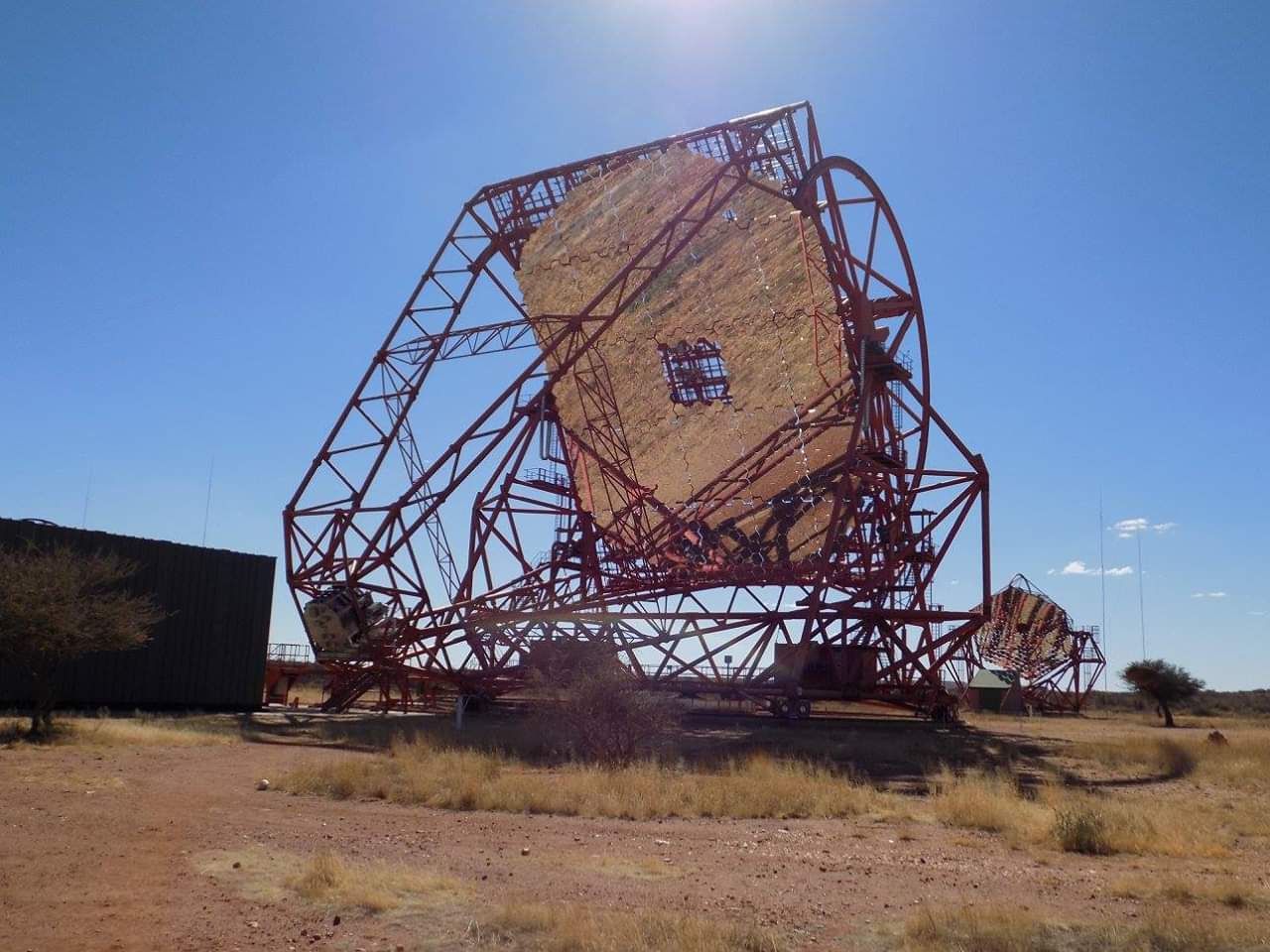
The central 28m telescope. Referred to as CT5 - or “Satan” as we nicknamed her, as she was temperamental to say the least. The building to the left of the shot is a two storey warehouse containing a crane designed to (un-)mount the camera from the structure - just to give you an idea of scale!

CT5 looming on the dusky horizon
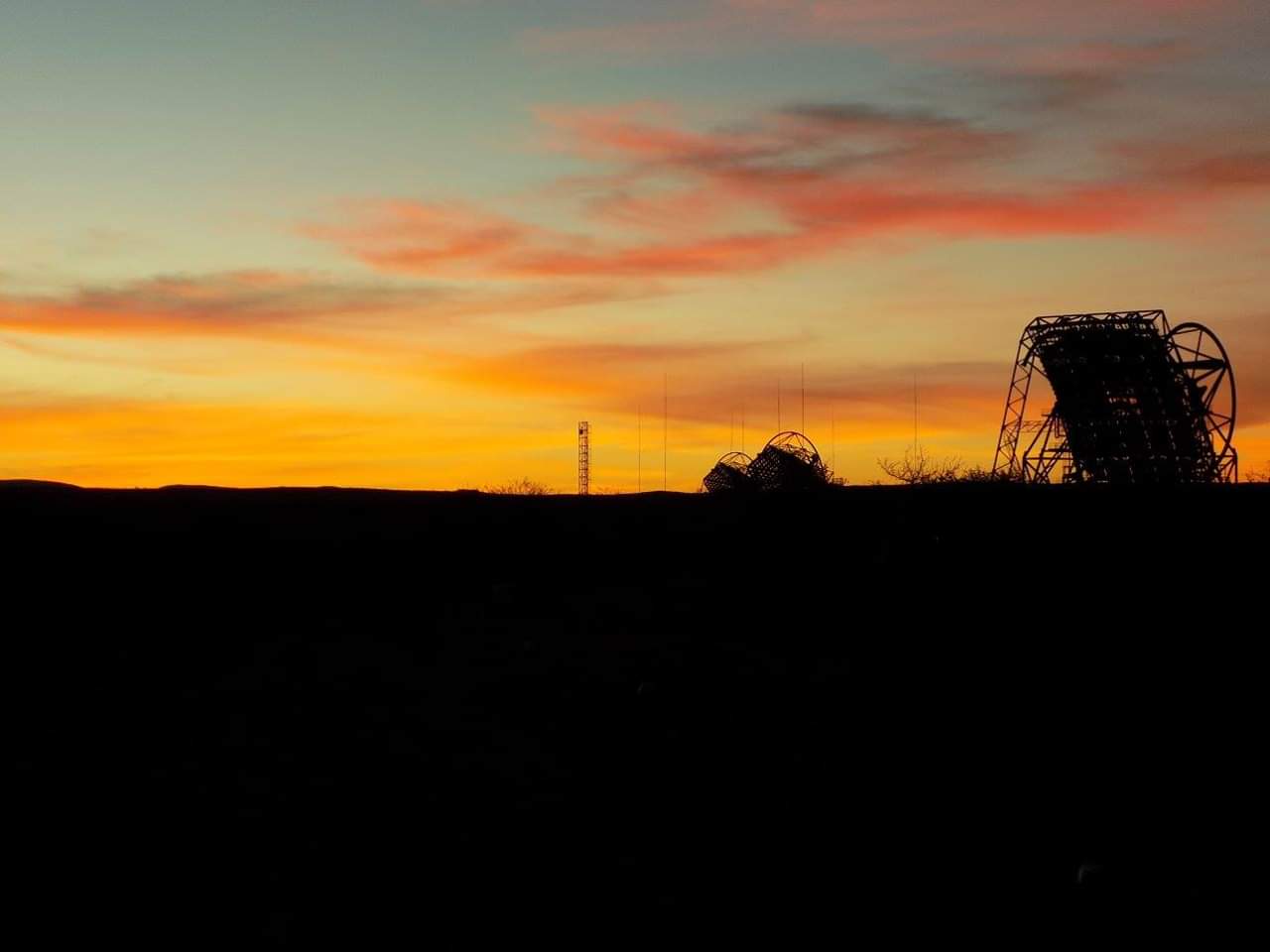
CT5 and two of the smaller telescopes silhouetted against an African sunset.
Following my observing shift, I took the opportunity to go on a safari to see more of the wonderful landscape and see some of the iconic wildlife.
The safari I chose was about a week long and spent the first few days in the northern region of Namibia in Etosha National Park. This was where we got to take in the wildlife!

A giraffe drinking precariously
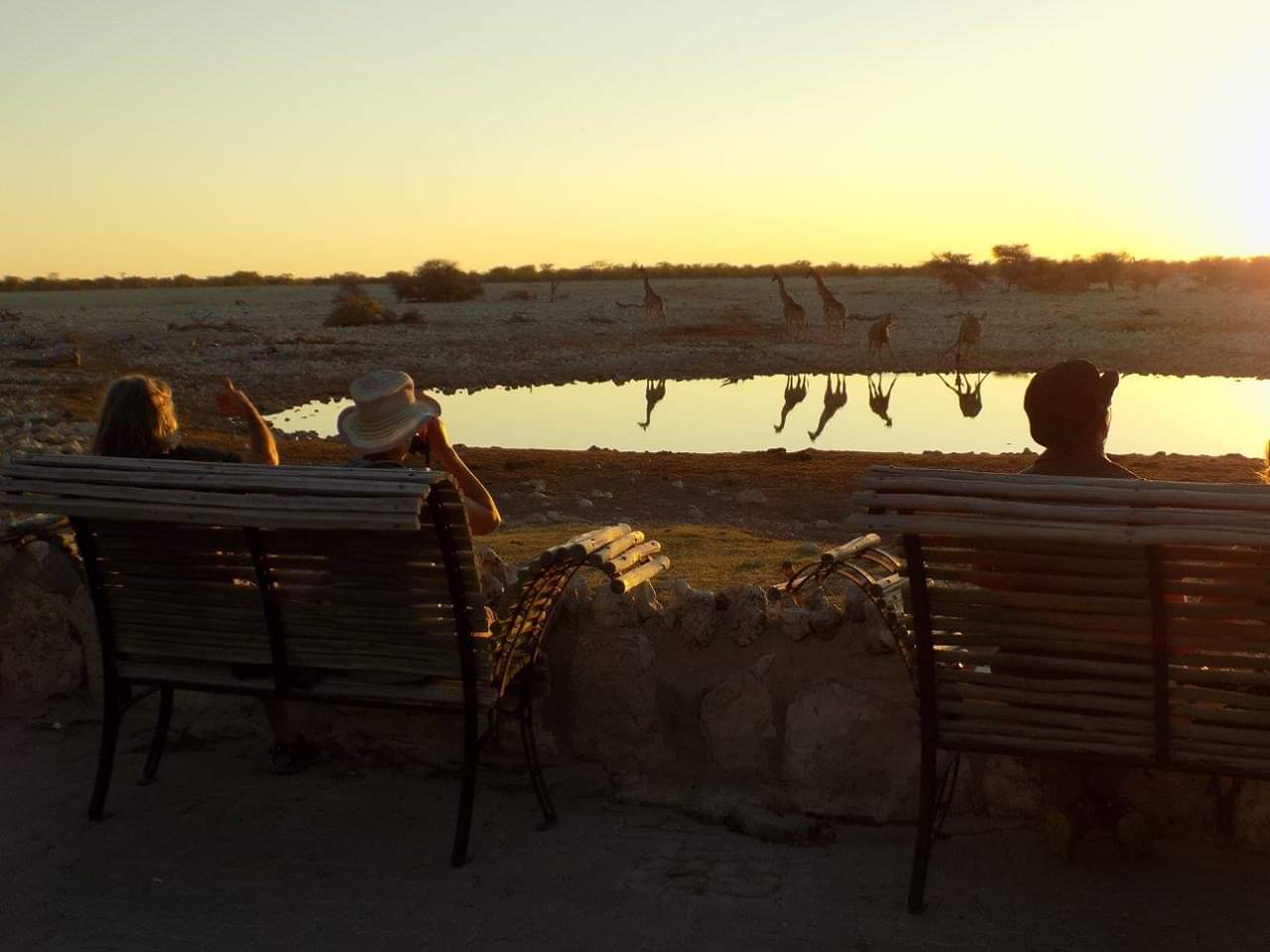
The Okaukuejo waterhole at sunset

A pair of lions patrolling their territory
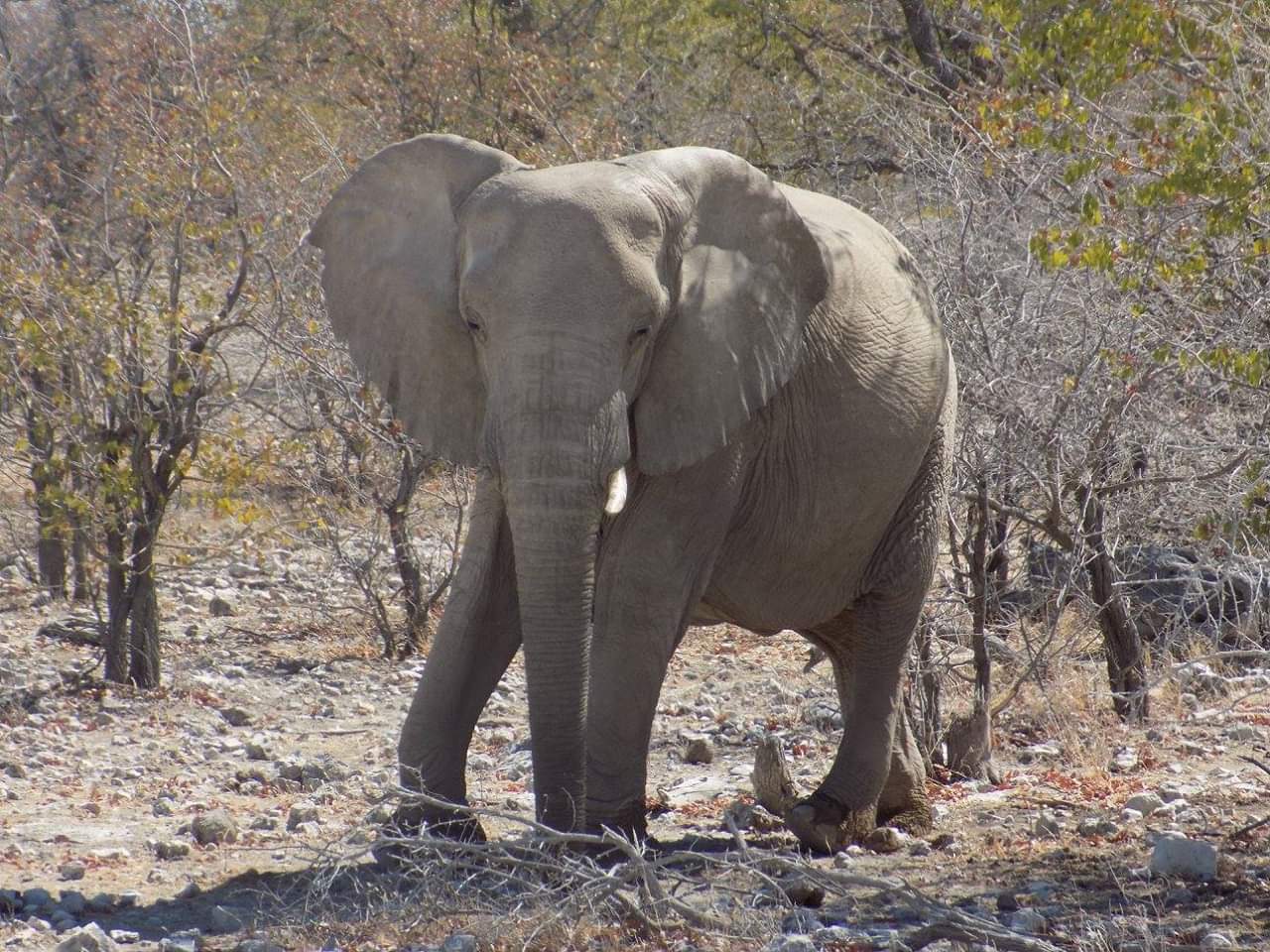
An elephant hanging out by the side of the road
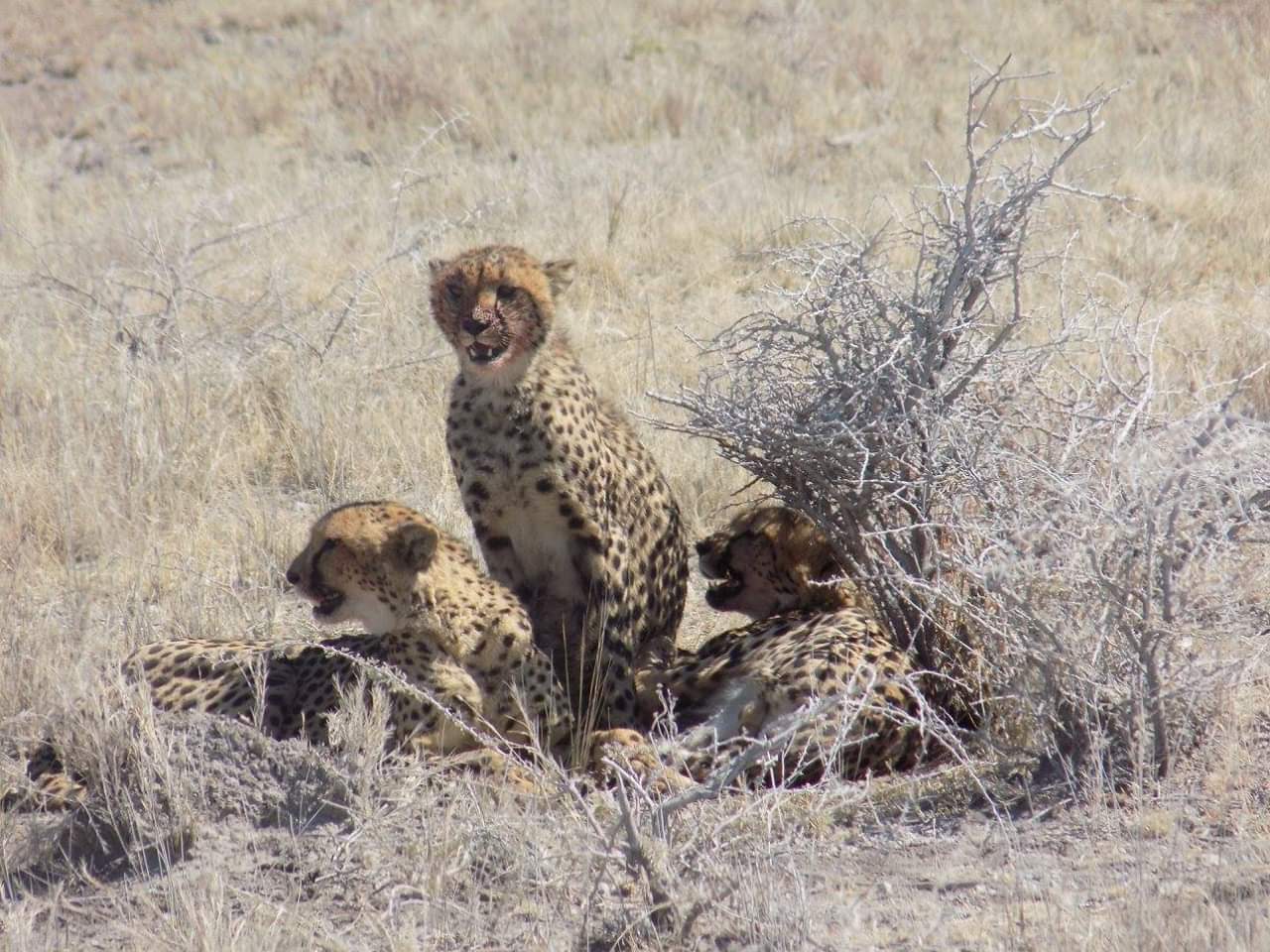
A group of cheetah catches their breath after chasing down a kill
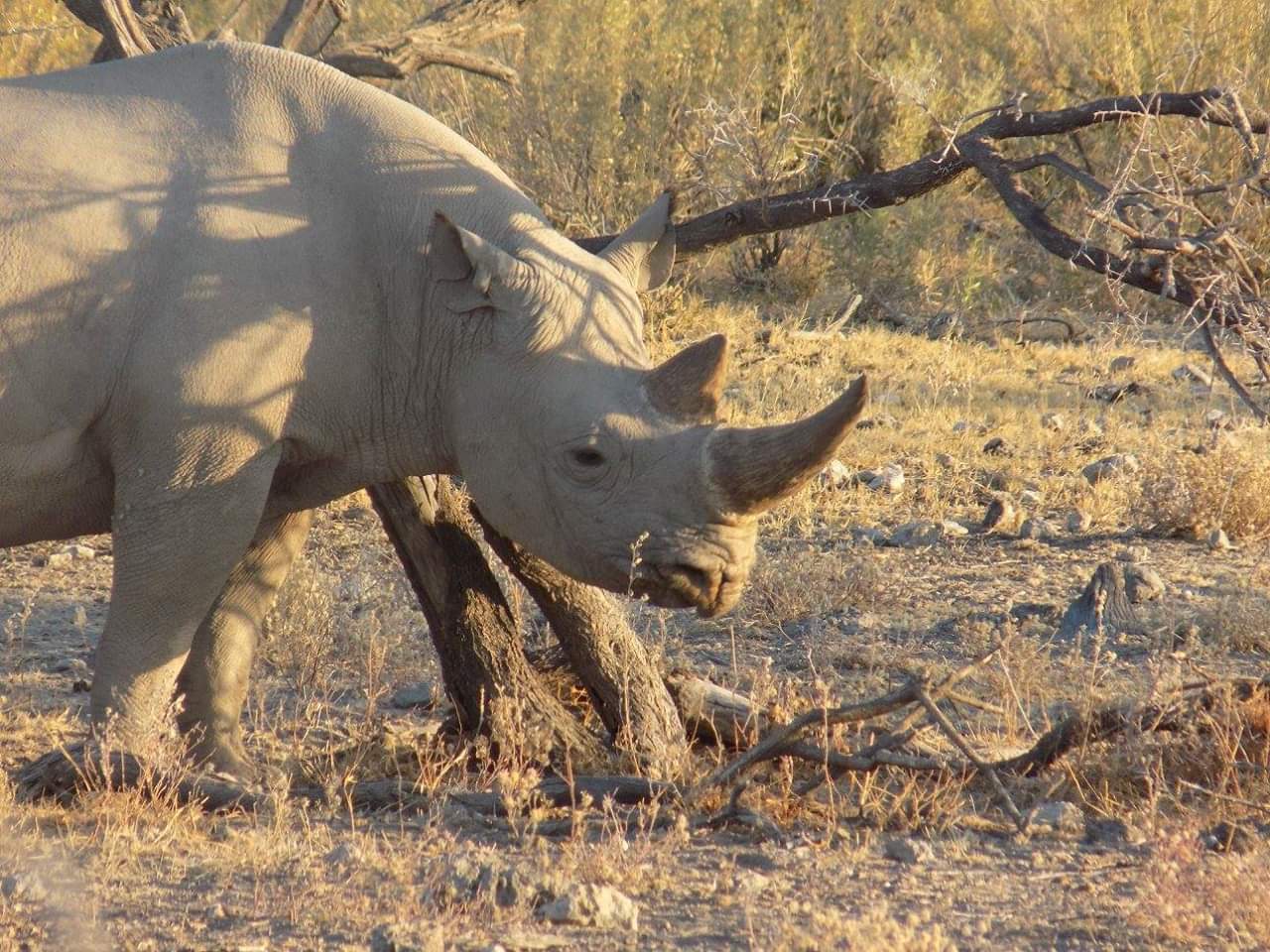
A black rhino having a scratch on a tree trunk
The second half of the safari took us out to the desert that stretches the coast of Namibia. This gave us breathtaking landscapes made of fiery dunes and ancient dried out lakes.

The fiery red dunes of Sossusvlei
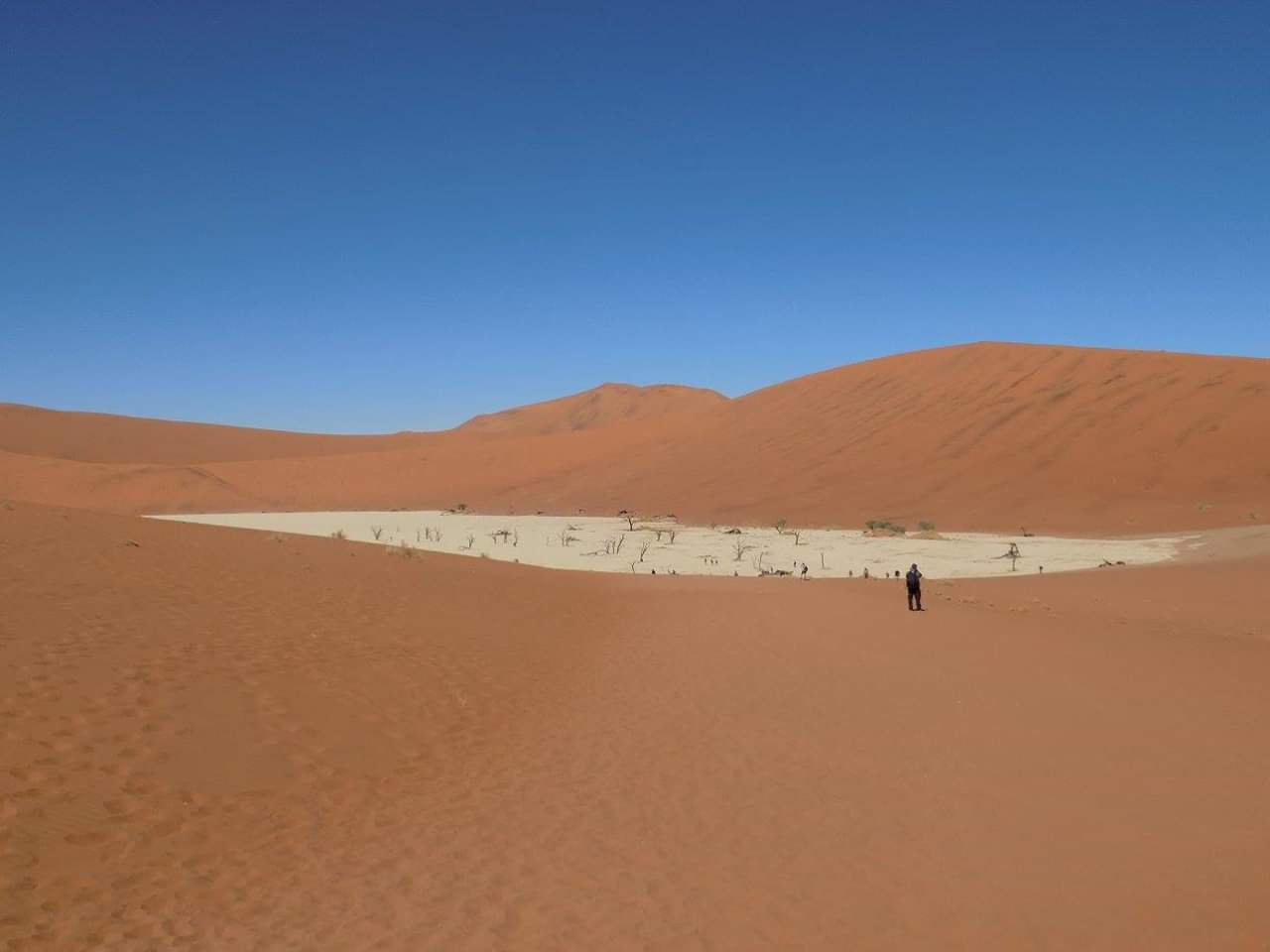
Deadvlei, an ancient, dried out lake
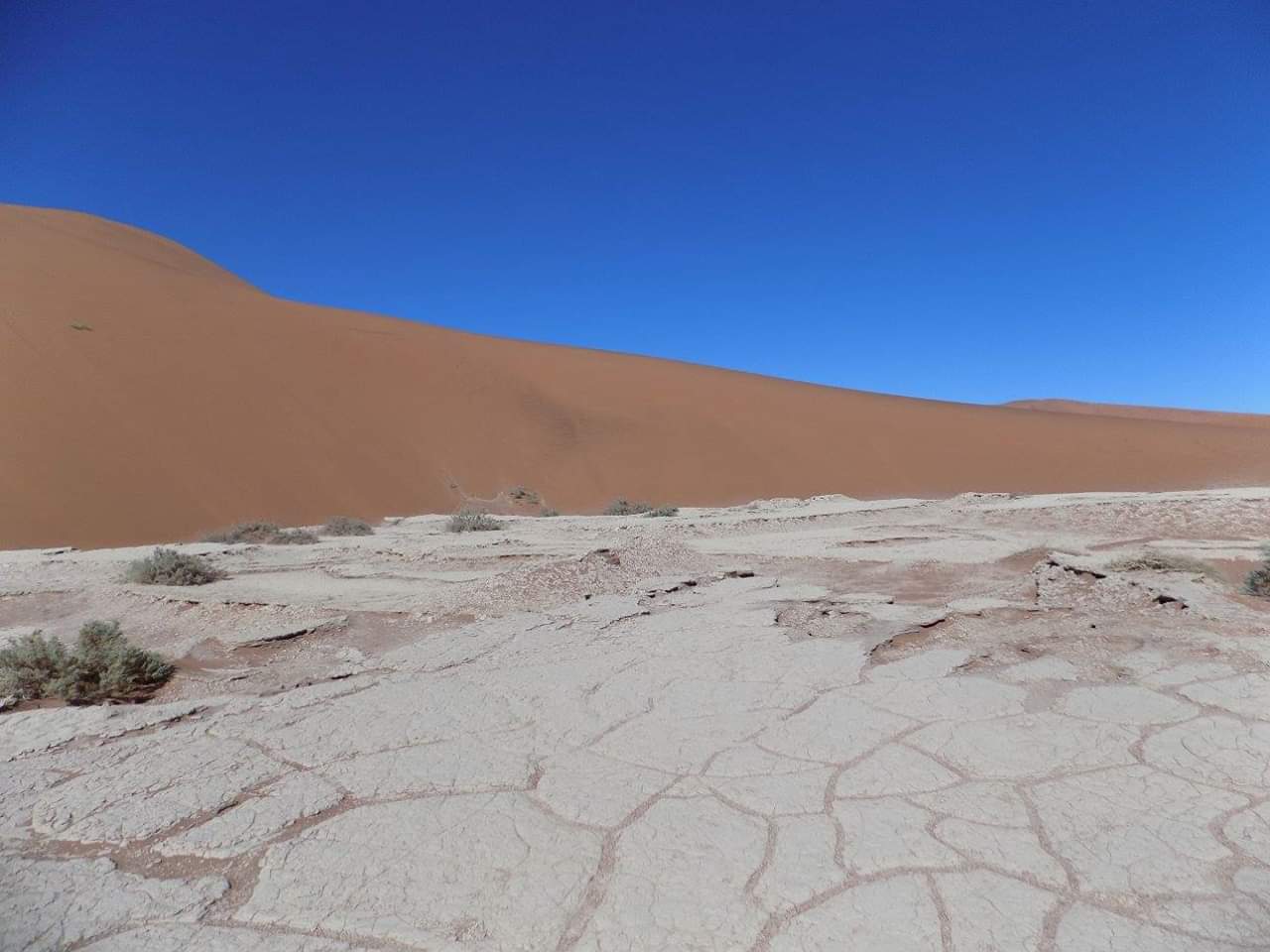
The dried, cracked claybed of the former lake
Overall, Namibia has probably been one of my favourite trips I’ve ever taken. It really tapped into my love of animals and experience new cultures and landscapes. But also, as my first big trip by myself, it gave me the confidence to keep getting out there!
Posts in this series
- Complete a 3 Peaks Challenge
- Go Horseback Riding
- See an Iconic West End Theatre Show
- See an Orchestra in Concert
- Have a Professional Photoshoot
- Take a Hot Air Balloon Ride at Sunrise
- Go on a Whale Watching Expedition
- Go on a Wildlife Safari
- Go Snorkelling or Scuba Diving
- See the Northern Lights
- Attend the Ballet
- 40 Before 40 Challenge